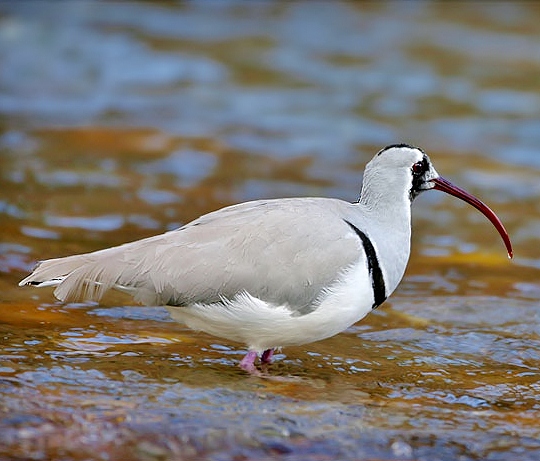 |
| Photo by Yeshey Dorji (Birding in India and South Asia) |
Common name:
ibisbill (en); bico-de-ibis (pt); béc-d’ibis tibétain (fr); pico de ibis (es); ibisschnabel (de)
Taxonomy:
Order Charadriiformes
Family Ibidorhynchidae
Range:
This Asia species is found from Kazakhstan and Afghanistan, through northern Pakistan and India and into China as far east as the Yellow Sea coast and southern Mongolia.
Size:
These birds are 38-42 cm long and weigh 270-320 g.
Habitat:
The ibisbill is mainly found along stony riverbeds, or sometimes also in sandy or silty areas with some rocks. They are typically found at altitudes of 1.700-4.400 m, but may come down to lower areas during winter.
Diet:
They forage by probing with their long bills under rocks or gravel, mainly taking aquatic and terrestrial invertebrates, such as caddisfly and mayfly larvae and grasshoppers. They also eat small fishes.
Breeding:
The ibisbill is monogamous and breeds in April- July. The nest is a shallow scrape on the ground, sometimes lined with pebbles and placed on a bank, island or peninsula along a river. There the female lays 2-4 greenish-grey eggs with brown spots which are incubated by both parents. There is no information regarding the length of the incubation period. The chicks leave the nest within hours of hatching, but remain with the parents for at least 25 days. They fledge 45-50 days after hatching.
Conservation:
IUCN status – LC (Least Concern)
This species has a very large breeding range, but the global population size has not been quantified. The population trend is difficult to determine because of uncertainty over the extent of threats to the species.







